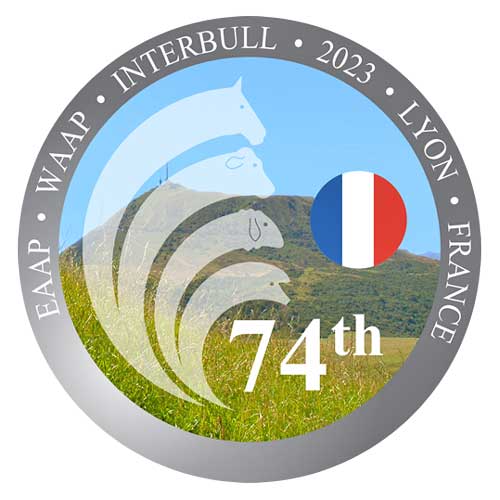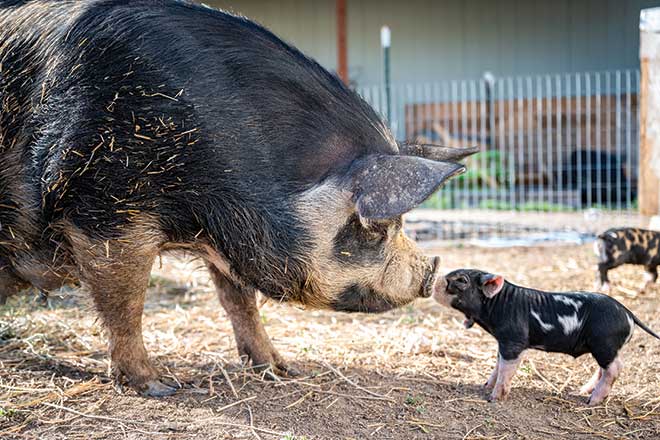ABOVE: Europe is still working through transition towards recent animal welfare regulatory changes, including trying to manage issues to improve piglet survivability. European
In late August, I had the privilege of representing the research team at Integrity Ag by presenting the preliminary findings of the lifecycle assessment conducted on the Australian pork industry.
This opportunity took me to Lyon in France, where I participated in the combined World Association of Animal Production and European Federation of Animal Production conference, from August 26 to September 1.
During this event, I had the honour of contributing to Australia’s successful bid to host the WAAP conference in 2028.
Additionally, I engaged in the OCED Food and Feed for the Future post-conference workshop – a platform dedicated to exploring the future of human sustenance and deliberating the various considerations and environmental trade-offs associated with both current and innovative food sources.
With over 2200 attendees, 1200 presentations and a profound focus on the primary theme of ‘climate change, biodiversity, and global sustainability of animal production’, the conference was an ideal occasion to offer an Australian perspective within Europe.
The European research landscape shows a robust commitment to multidisciplinary research that includes animal welfare, nutrition and environmental sustainability, with many projects addressing production and environmental outcomes as well.
This was seen in areas including nutrition and welfare, where pigs were given access to an outdoor run to improve their welfare, however this was noted to have negative environmental consequences through nutrient run-off.
Australia was well-represented, with over 50 of us participating in the event and presentations by Australian researchers spanning various animal species.
I had the opportunity to present the results of our 2022 pork LCA, which fit very well with the theme of the conference and provided an alternative viewpoint to the European perspective in this space.
This allowed for a constructive dialogue regarding the differences in production systems and environmental impacts, providing an insightful contrast to the European perspective.
Among the conference’s notable presentations were those of Robert Hewitt from SunPork Group, who presented ground-breaking research on net protein contribution, and Frank Dunshea’s address on strategies for mitigating heat stress in pigs.
Frank’s presentation was complemented by his recognition as the recipient of the WAAP Award and his successful nomination as WAAP President for the upcoming term of five years – congratulations Frank!
In terms of top takeaways for producers and the Australian pork industry, these are my key learnings.
Environmental sustainability is progressively becoming intertwined with other facets of production performance, particularly within the European context.
It is increasingly common to observe new nutritional supplements and diets accompanied by comprehensive lifecycle assessments, aiding producers in understanding and managing their emissions, water utilisation and land impact.
Concepts such as ‘one welfare’ and ‘one quality’ have emerged to include the broader system impacts and implications of practices.
We must begin to tell our whole farm story.
Europe’s narrative revolves significantly around agroecology – encompassing practices that foster species diversity on farms and incorporate tree planting and rotational crops to enhance biodiversity outcomes.
Discussions centred on whole farm systems are pivotal in shaping a strong environmental narrative.
In terms of managing environmental impacts, Australia holds an advantage in certain aspects, while facing distinct challenges.
It is imperative to explore and explain these distinctions in broader conversations to ensure the inclusion of Australia’s unique context.
For example, Europe places substantial emphasis on reducing the environmental footprint of imported feed products such as soy, whereas Australia, with access to alternatives such as canola, has optimised practices.
In contrast, Europe tends to overlook manure management and mitigating greenhouse gas emissions as their deep-pit systems effectively capture emissions in their housing, whereas in the Australian context, this remains a challenge.
There will continue to be a focus on alternative and novel proteins.
This includes precision fermentation, insect-based foods and cell-based products.
However, it is essential to note that the Food and Agriculture Organisation predicts these innovations will continue to be a minority, with a shift in dietary preferences only reducing livestock emissions by about 5 percent.
Interestingly, while these emerging industries are worth monitoring, it is crucial to distinguish between the current hype and their actual capacity to displace traditional meat products from the market.
Europe and Australia share their continued focus on innovation and continual improvement in animal welfare.
Research on tail biting was presented, despite some regions having banned the practice of tail docking.
A solution to prevent and manage the problem in commercial herds remains elusive.
Enrichment for the sow, throughout her life, was also a focus.
Research examined nutritional strategies, provision of enrichment at mating, gestation and farrowing and impact on managing end of life through abattoirs.
Europe is still working through transition towards recent animal welfare regulatory changes.
A key area will be trying to manage issues to improve piglet survivability.
In many cases, piglet survivability issues seem to be exacerbated by large litter sizes, and there is talk of scaling back litter size as a breeding target to help improve born alive and survival to post weaning figures.
At a time when we recognise consumers’ growing interest in sustainability, there is a great opportunity for the Australian pork industry to position itself as a leader, which is supported by robust research and ongoing sustainability goals.
Gemma Wyburn
APL Climate Friendly Farming Program Manager








